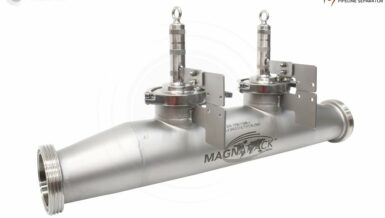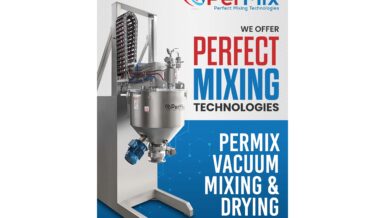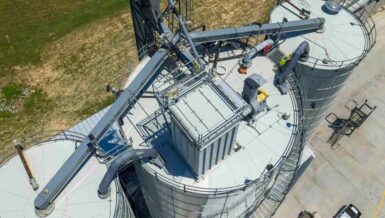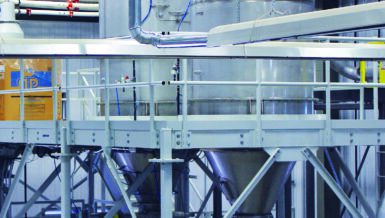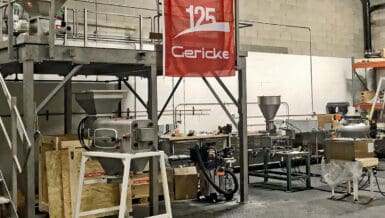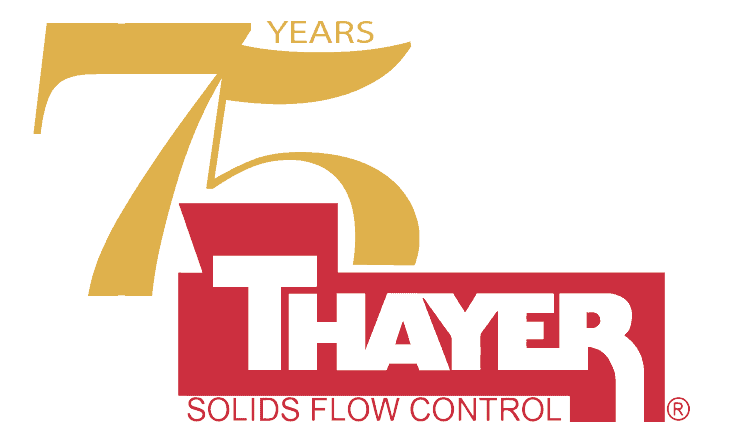For bulk dairy suppliers, regimented hygiene, cleaning and testing programs are essential to prevent the build-up of pathogens and allergens in the processing environment. This is particularly true for enclosed systems, including the conveying of produce, which marks a critical point in the process to control safety and sanitation. Smart design, expert construction and new technologies can help conveying systems to maintain the highest hygiene standards and prevent dangerous and costly recalls.
Prepare and prevent
Although a withdrawal doesn’t necessarily spell disaster for a manufacturer, a high-profile case could turn customers away, especially due to food safety concerns in the wake of COVID-19. Increased market competition and ongoing uncertainty means that dairy suppliers are under more pressure than ever to avoid recalls.

A report from Public Interest Research Group (PIRG) shows that recall cases in the US increased by 10% between 2013 and 2018, hitting a peak of 905 in 2016. Dairy products make up a significant share of this statistic, with undeclared allergens and bacterial contamination noted as the leading causes of recalls within this sector.
A robust preventative strategy is key. While many countries across the world must adhere to local legislation, food safety is often based upon or driven by the standards set out by the FDA’s Food Safety Modernization Act (FSMA) standards. After the 2016 implementation of the Hazard Analysis and Risk-based Preventive Control (HARPC) act, many dairy manufacturers had to raise their standards in a bid to prevent potential hazards from occurring.
The HARPC guidelines go beyond critical control points, calling on suppliers to document all potential risks and implement measures to avoid them. As well as planning for potential terrorist acts, cleanliness and sanitation are noted as key preventative steps that need to be controlled.
Implementing a food safety strategy
While no company can completely eliminate the risk of recalls, following best safety practices can help minimize the possibility. Manufacturers have a responsibility to establish a food safety plan to comply with legal requirements, with contaminant management being an integrated part of the program.
When specifying conveyors, dairy suppliers must consider higher frequency of cleaning with the use of chemical sterilization. To be free from residues containing pathogens and allergens, it’s paramount that conveyors are fully sanitized after handling all types of product.
Enclosed tubular systems are beneficial in keeping the product protected from atmospheric, airborne contaminants, meaning the risk for recalls is significantly reduced. Ideally, clean-in-place (CIP) technology is deployed to avoid the dismantling and reassembly of the equipment and provide a re-usable, sanitized conveyor within a significantly shorter wash down period.

In addition, for dairy producers, USDA-accepted equipment with FDA-approved components demonstrates high quality standards and due diligence on their part to use machinery with recognized certification. As well as providing manufacturers peace of mind that their system is microbiologically clean, machinery designed to a recognized standard typically requires less cleaning time, saving on water, product, labor costs and energy.
While the conveying system might only comprise one section of a dairy supplier’s much larger, complex manufacturing line, overlooking this integral part of the process could be the difference between risking allergens and pathogens making their way into the food chain and maintaining a brand’s reputation as one that takes food safety seriously





